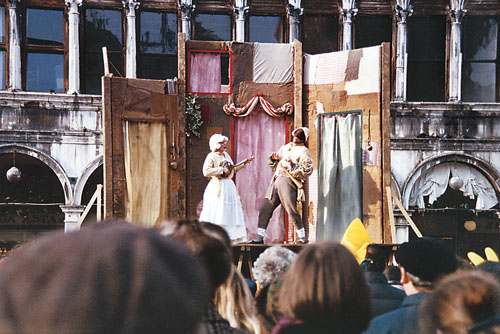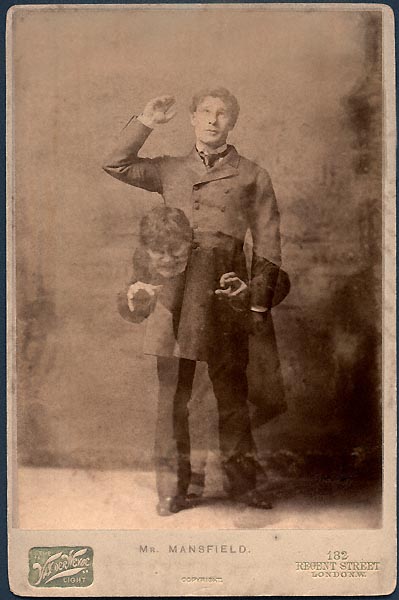|
Vecchio
''Vecchio'' (; plural ''vecchi'', meaning "old one" or simply "old"), is a category of aged, male characters from the Italian ''commedia dell'arte''. The primary members of this group are Pantalone, Il DottoreRobert Henke ''Performance and literature in the commedia dell'arte'', Improvvisation and characters, Individual roles, pp.19-24 and Il Capitano. Pantalone and Il Dottore are the alter ego of each other, Pantalone being the decadent wealthy merchant, and Il Dottore being the decadent erudite. They are overwhelmingly the antagonists, opposing the love of the ''innamorati''; the comic ending is produced when the ''zanni'' manage to overcome them and unite the lovers. "Vecchio" is the Italian word for "old" (as used in Ponte Vecchio The Ponte Vecchio ("Old Bridge", ) is a medieval stone closed-spandrel segmental arch bridge over the Arno River, in Florence, Italy. The only bridge in Florence spared from destruction during the Second World War, it is noted for the shops bui ... [...More Info...] [...Related Items...] OR: [Wikipedia] [Google] [Baidu] |
Ponte Vecchio
The Ponte Vecchio ("Old Bridge", ) is a medieval stone closed-spandrel segmental arch bridge over the Arno River, in Florence, Italy. The only bridge in Florence spared from destruction during the Second World War, it is noted for the shops built along it; building shops on such bridges was once a common practice. Butchers, tanners, and farmers initially occupied the shops; the present tenants are jewelers, art dealers, and souvenir sellers. The Ponte Vecchio's two neighboring bridges are the Ponte Santa Trinita and the Ponte alle Grazie. The bridge connects via Por Santa Maria (Lungarno degli Acciaiuoli and Lungarno degli Archibusieri) to via de 'Guicciardini (Borgo San Jacopo and via de' Bardi). The name was given to what was the oldest Florentine bridge when the bridge to the Carraia was built, then called "Ponte Nuovo" in contrast to the pons Vetus. Beyond the historical value, the bridge over time has played a central role in the city road system, starting from when it c ... [...More Info...] [...Related Items...] OR: [Wikipedia] [Google] [Baidu] |
Commedia Dell'arte
(; ; ) was an early form of professional theatre, originating from Italian theatre, that was popular throughout Europe between the 16th and 18th centuries. It was formerly called Italian comedy in English and is also known as , , and . Characterized by masked "types", was responsible for the rise of actresses such as Isabella Andreini and improvised performances based on sketches or scenarios. A , such as ''The Tooth Puller'', is both scripted and improvised. Characters' entrances and exits are scripted. A special characteristic of is the , a joke or "something foolish or witty", usually well known to the performers and to some extent a scripted routine. Another characteristic of is pantomime, which is mostly used by the character Arlecchino, now better known as Harlequin. The characters of the usually represent fixed social types and stock characters, such as foolish old men, devious servants, or military officers full of false bravado. The characters are exaggerated " ... [...More Info...] [...Related Items...] OR: [Wikipedia] [Google] [Baidu] |
Pantalone
Pantalone , spelled Pantaloon in English, is one of the most important principal characters found in . With his exceptional greed and status at the top of the social order, Pantalone is "money" in the commedia world. His full name, including family name, is ''Pantalon de' Bisognosi'', Italian for "Pantalone of the Needy".Robert Henke ''Performance and literature in the commedia dell'arte'', Improvisation and characters, Individual roles, pp. 19–24 Character Pantalone originated as part of a master/servant duo and was the original il Magnifico stock character. Carlo Goldoni, in his memoirs, named Pantalone as one of the four primary Commedia dell'Arte characters. Among other things, Pantalone is a character of Venetians; one theory is that his name derives from Saint Pantaleon (''San Pantalone''), a popular saint in Venice. Another theory is that his name derives from Venetian merchants who were called Piantaleoni. While the theories of the St Pantaleone and the lion of St Mark ... [...More Info...] [...Related Items...] OR: [Wikipedia] [Google] [Baidu] |
Il Dottore
Il Dottore (, 'the Doctor'), commonly known in Italian as ''Dottor Balan'' or simply ''Balanzone'' (; Bolognese egl, Dutåur Balanzån) is a '' commedia dell'arte'' stock character, in one scenario being an obstacle to young lovers. Il Dottore and Pantalone are the comic foil of each other, Pantalone being the decadent wealthy merchant, and Il Dottore being the decadent erudite. He has been part of the main canon of characters since the mid-16th century. Overview Il Dottore was born from the city of Bologna, Italy. He is comically inept. He is usually extremely rich, though the needs of the scenario might have things otherwise, and extremely pompous, loving the sound of his own voice and spouting ersatz Latin and Greek, Il Dottore is known to be overly self loving and greedy. His interaction in the play is usually mostly with Pantalone, either as a friend, mentor or competitor. History Il Dottore first originated as the comic foil of Pantalone. The character has his performanc ... [...More Info...] [...Related Items...] OR: [Wikipedia] [Google] [Baidu] |
Robert Henke
Robert B. Henke (born 1969) is a German computer music artist working in the fields of audiovisual installation, music and performance. He was born in Munich, Germany, and lives in Berlin. Coming from an engineering background, Henke is fascinated by the beauty of technical objects. Developing his own instruments and algorithms is an integral part of his creative process. His materials are computer generated sound and images, field recordings, photography and light; transformed, re-arranged and modulated by mathematical rules, real time interaction and controlled random operations. Many of his works use multiple channels of audio or are specifically conceived for unique locations and their individual properties. For the past few years, he has been exploring the artistic usage of high power lasers in his installations and performances. Robert Henke is also a co-creator of the music software Ableton Live, with Gerhard Behles. Since 1995 he has produced electronic music under the n ... [...More Info...] [...Related Items...] OR: [Wikipedia] [Google] [Baidu] |
Il Capitano
Il Capitano (, Italian for "The Captain") is one of the four stock characters of ''Commedia dell'arte.'' He most likely was never a "Captain" but rather appropriated the name for himself. He is often a braggart and a swaggerer who can maintain his claims only by benefit of the fact that none of the locals know him. He is usually a Spaniard, given the fact that for most of the late Renaissance to well into 17th century, parts of Italy were under Spanish domination. He was most likely inspired by the boisterous Iberic caudillos who told tall tales of their exploits either in the conquest of the Americas or in the wars with Germany. Il Capitano often talks at length about made-up conquests of both the militaristic and the carnal variety in an attempt to impress others, but often ends up impressing only himself. He gets easily carried away in his tales and doesn't realise when those around him don't buy his act. He would be the first to run away from any and all battles, and he h ... [...More Info...] [...Related Items...] OR: [Wikipedia] [Google] [Baidu] |
Alter Ego
An alter ego (Latin for "other I", " doppelgänger") means an alternate self, which is believed to be distinct from a person's normal or true original personality. Finding one's alter ego will require finding one's other self, one with a different personality. The altered states of the ego may themselves be referred to as ''alterations''. A distinct meaning of ''alter ego'' is found in the literary analysis used when referring to fictional literature and other narrative forms, describing a key character in a story who is perceived to be intentionally representative of the work's author (or creator), by oblique similarities, in terms of psychology, behavior, speech, or thoughts, often used to convey the author's thoughts. The term is also sometimes, but less frequently, used to designate a hypothetical "twin" or "best friend" to a character in a story. Similarly, the term ''alter ego'' may be applied to the role or persona taken on by an actor or by other types of performers. Or ... [...More Info...] [...Related Items...] OR: [Wikipedia] [Google] [Baidu] |
Antagonist
An antagonist is a character in a story who is presented as the chief foe of the protagonist. Etymology The English word antagonist comes from the Greek ἀνταγωνιστής – ''antagonistēs'', "opponent, competitor, villain, enemy, rival," which is derived from ''anti-'' ("against") and ''agonizesthai'' ("to contend for a prize"). Types Heroes and villains The antagonist is commonly positioned against the protagonist and their world order. While most narratives will often portray the protagonist as a hero and the antagonist as a villain, like Harry Potter and Lord Voldemort in '' Harry Potter'', the antagonist does not always appear as the villain. In some narratives, like Light Yagami and L in '' Death Note'', the protagonist is a villain and the antagonist is an opposing hero. Antagonists are conventionally presented as making moral choices less savory than those of protagonists. This condition is often used by an author to create conflict within a story. This is ... [...More Info...] [...Related Items...] OR: [Wikipedia] [Google] [Baidu] |
Innamorati
''Gli Innamorati'' (, meaning "The Lovers") were stock characters within the theatre style known as commedia dell'arte, who appeared in 16th century Italy. In the plays, everything revolved around the Lovers in some regard. These dramatic and posh characters were present within ''commedia'' plays for the sole purpose of being in love with one another, and moreover, with themselves. These characters move elegantly and smoothly, and their young faces are unmasked unlike other commedia dell'arte characters. Despite facing many obstacles, the Lovers were always united by the end.Eick, JustiCommedia dell'Arte Origins The name ''Innamorati'' is the Italian word for "Lovers".Rudlin, John. ''Commedia dell'Arte, An Actor's Handbook''. Routledge, London, 1994, pp.106 The dramatists of the Italian Renaissance borrowed ideas from early Roman playwrights, such as Plautus and Terence, whom the theater style known as ''commedia erudita'' was inspired by. The "lovers" are the first actor, firs ... [...More Info...] [...Related Items...] OR: [Wikipedia] [Google] [Baidu] |
Zanni
Zanni (), Zani or Zane is a character type of commedia dell'arte best known as an astute servant and a trickster. The Zanni comes from the countryside and is known to be a "dispossessed immigrant worker".Rudlin, John. ''Commedia dell'arte: An Actors Handbook''. London: Routledge, 1994. 67. Print."Immigrant" in Italy at the time of the city-states did not mean someone from outside of Italy but rather someone from outside the city, an itinerant worker. Through time, the Zanni grew to be a popular figure who was first seen in ''commedia'' as early as the 14th century. The English word ''zany'' derives from this person. The longer the nose on the characters mask the more foolish the character. Origin of the name The name ''Zanni'' (as well as ''Zuan'') is a variant of the name ''Gianni'' and was common in the Lombard-Venetian countryside which provided most of the servants to the wealthy nobles and merchants of Venice. In Italian it is specifically a name of someone whose identity i ... [...More Info...] [...Related Items...] OR: [Wikipedia] [Google] [Baidu] |








